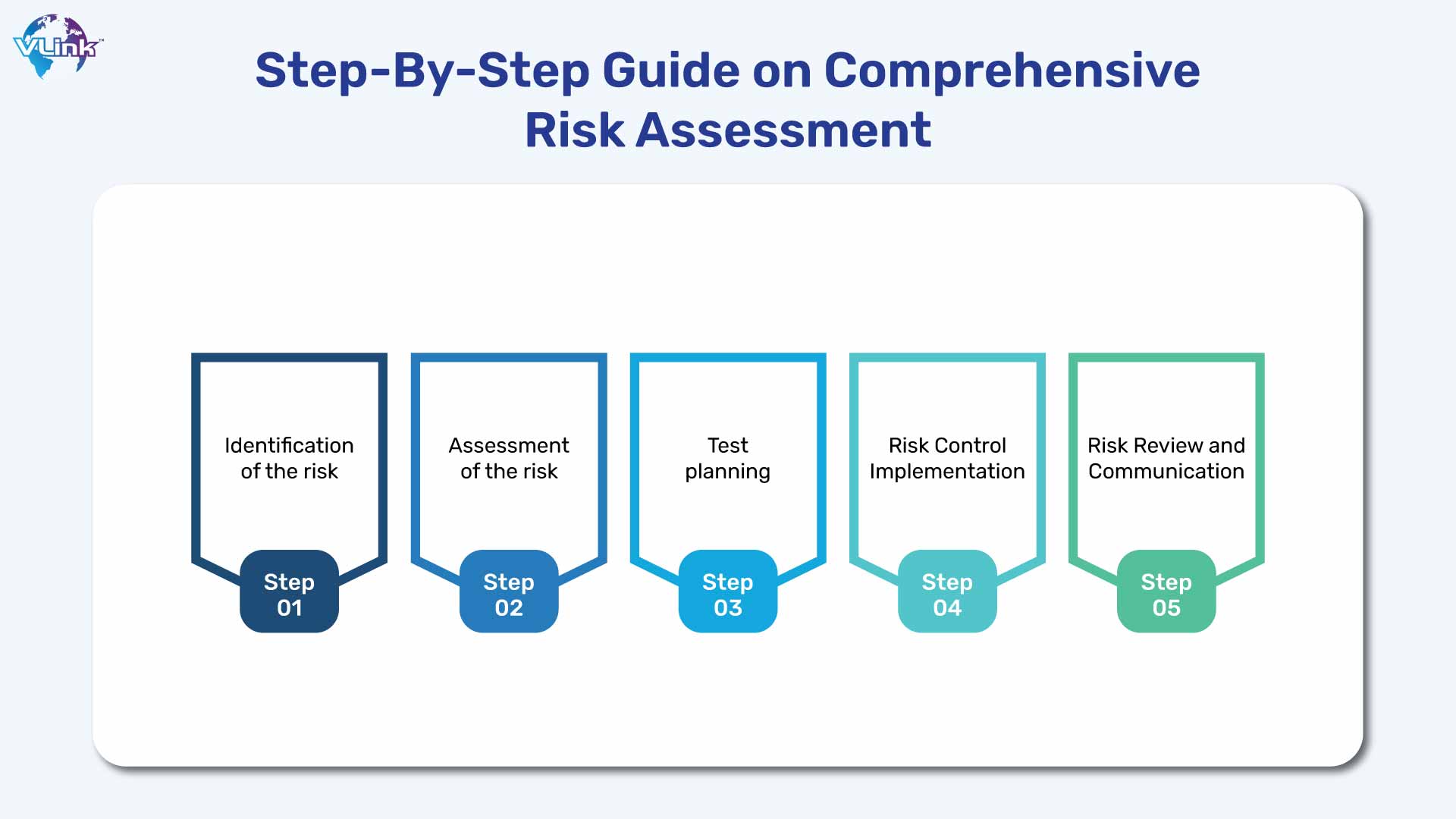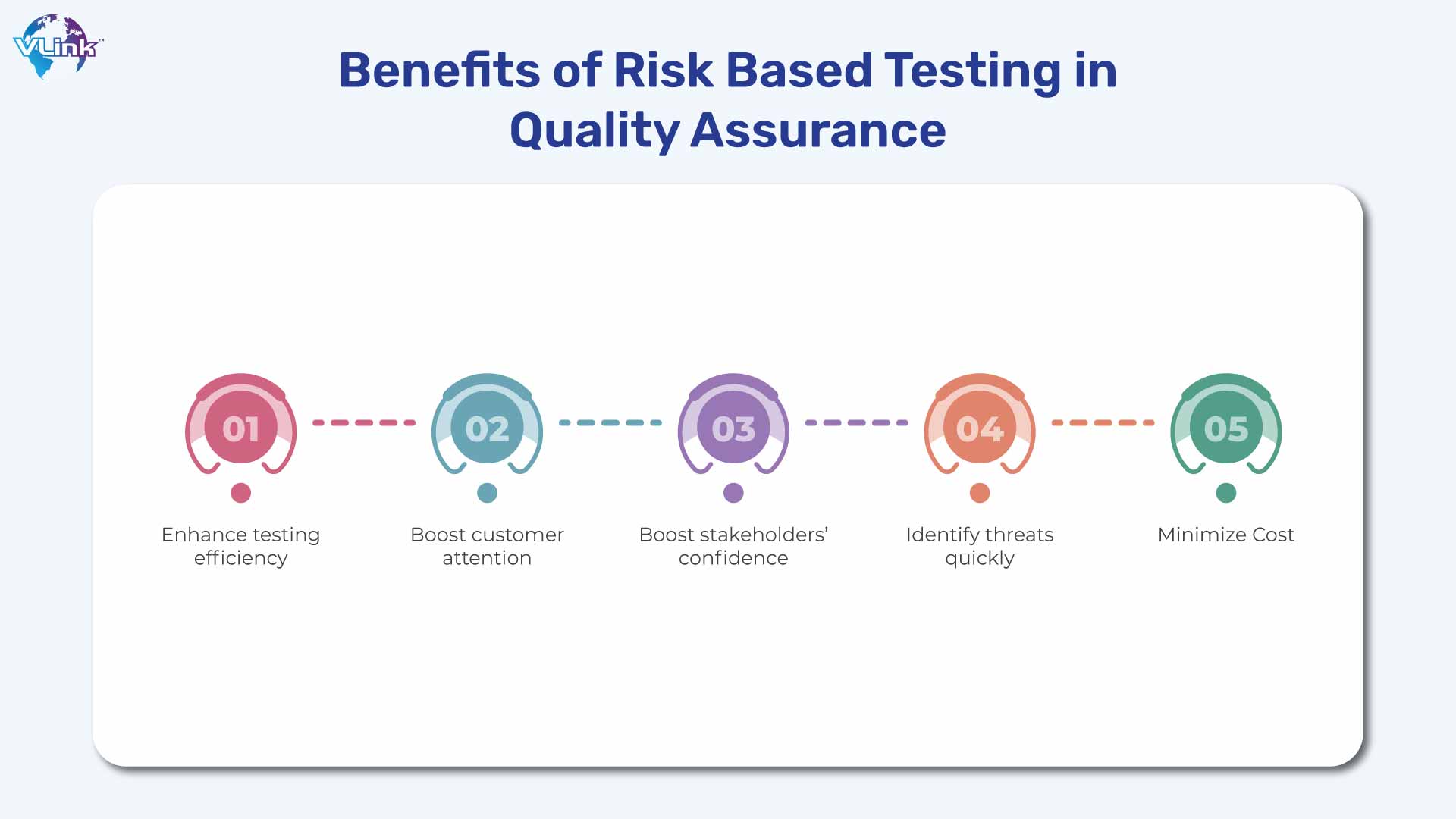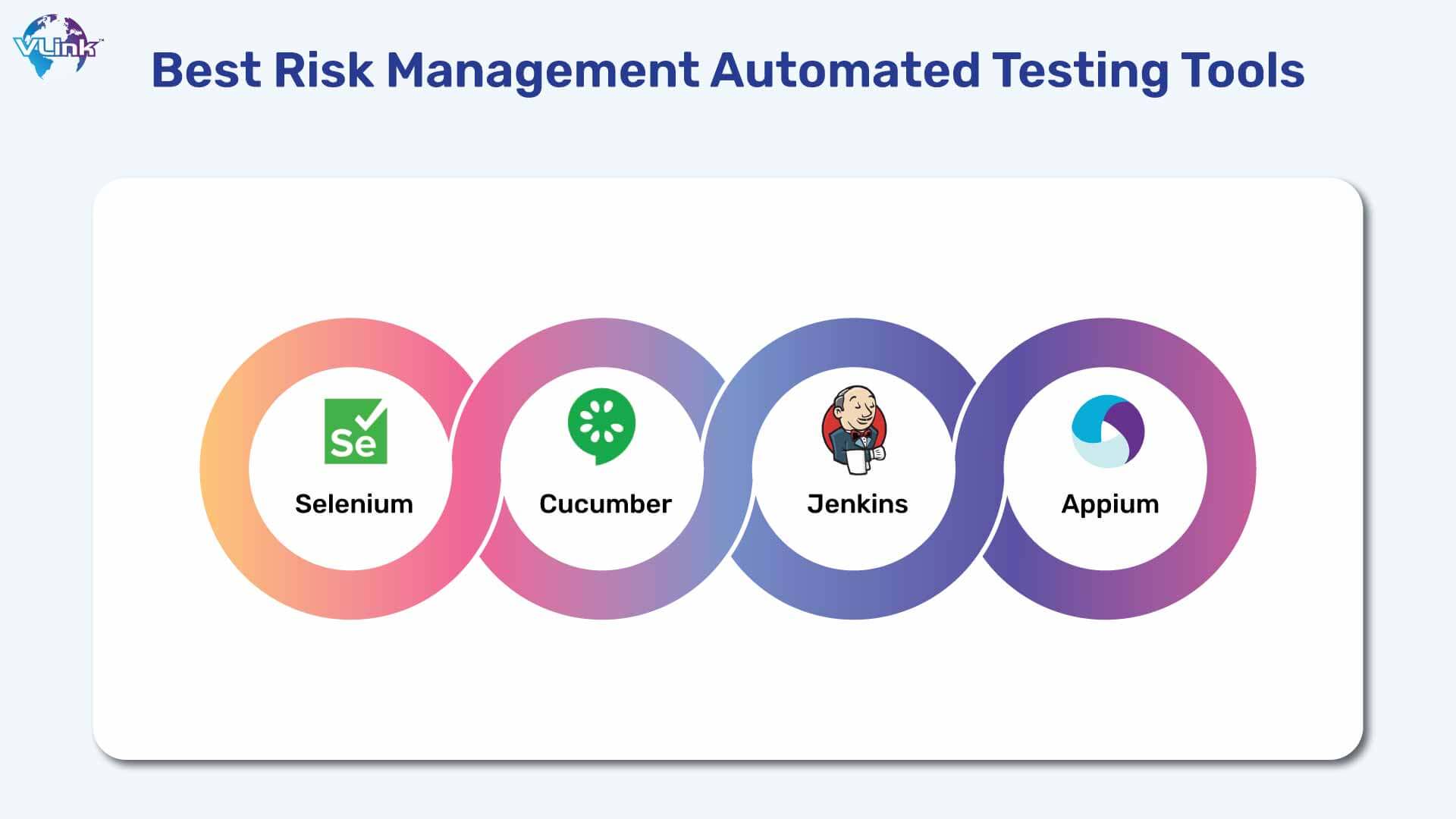Comprehensive risk assessment helps businesses in identifying and mitigating the most critical risks that can influence the quality, reliability, and effectiveness of the software. Read on to find out a step-by-step guide on how to conduct a comprehensive risk analysis.
Drafting a planning blueprint is crucial, regardless of whether you are launching new software or a venture. When talking about the planning, the major component to focus on is dealing with the potential risks of the project. But how exactly is it done? With the help of implementing a comprehensive risk assessment process.
Risk-based testing is critical to ensuring the quality, reliability, and functionality of applications and systems. According to global market insights, the risk management industry has grown through the USD 45 billion milestone in 2022. Additionally, the market is rapidly growing and is expected to grow at a 5% CAGR from 2023 to 2032. Convinced yet? So, keep reading to explore a detailed guide on how to conduct a comprehensive risk assessment in detail.

What is a Comprehensive Risk Assessment?
A risk assessment is a comprehensive process to identify possible risks that might happen while performing any activity. It discovers the risks in steps to categorize them into three major categories: high-risk, medium-risk, and low-risk.
Risk-based quality assessment and testing services provides a detailed report on present and future business challenges. Consequently, risks are ordered from high to low after evaluating the likelihood of each risk. The final step includes finding a solution to overcome the possible risks. Generally, easy and quick procedures that might require less budget and resources are primarily implemented.
What is Risk Based Testing in Quality Assurance?
Risk-based testing in quality assurance is a software testing method that prioritizes testing depending on the possibility of a risk occurring. This comprehensive risk assessment process evaluates risk based on numerous factors, which include:
- Difficulty level of the software.
- The significance of the software for the business.
- How frequently will the software be used?
- Possible areas that are more likely to have errors.
But why are these factors important? This approach assists in identifying crucial areas for development and allocating resources more appropriately. Simply put, risk-based analysis of the software helps in identifying the potential risks affecting customers or businesses.
Step-by-Step Guide to Comprehensive Risk Assessment

Risk assessment in quality assurance is a comprehensive process. Usually, the method prioritizes the efforts depending on the likelihood and the influence of the risk. Here’s a step-by-step guide to a comprehensive risk assessment process:
- Identification of the Risk
First and foremost, recognize, categorize, and organize the risks from the highest to the lowest threat level. Wondering how to do so? Start by reviewing needs, customer stories, project documentation, brainstorming, checklists, workshops, root cause analysis, and communicating with business analysts to define the problem. Thus, the first step in a comprehensive risk assessment process will enable you to identify the potential risks associated with the software.
- Assessment of the Risk
The next crucial step in a risk-based testing process is assessing them depending on their probability of occurrence and their influence on the system. The risk assessment step carries weight because it helps evaluate the degree of uncertainty of each risk and order them according to their importance. You can use various approaches, like utilizing risk metrics, maintaining risk registers, or conducting probability and impact analysis, for a comprehensive risk assessment.
- Test Planning
Prepare a comprehensive risk assessment test plan that clearly defines your objectives, scope, test cases, and strategies to address your risk identification. Choose specific testing approaches, including the relevant tools and frameworks. In addition, allocate resources like testing environments, personnel, and timeframes properly to implement the test plan successfully.
- Risk Control Implementation
Planning means nothing without a proper execution. Therefore, the next step in a comprehensive risk assessment process is to develop test cases for the most critical risks. Ensure that the set of actions you take minimize or overcomes the possibility of present and future threats.
In some cases, risks come to an acceptable threat level after implementing the test cases. However, in many other cases, mitigating the risk is impossible for the quality relationship management team.
- Risk Review and Communication
Lastly, reviewing and tracking the progress of the risk-based testing activities continuously is critical. You can repeat the testing activities if they provide positive results for risk mitigation. Further, you can also modify the testing activities if required.
Meanwhile, share a comprehensive risk assessment analysis with the stakeholders, apart from our dedicated teams for QRM. The report must have a detailed brief from the beginning to the end.
Benefits of Risk Based Testing in Quality Assurance

Risk-based testing helps in analyzing the threats in a better way. It helps in enhancing business efficiency by mitigating a critical risk threat quickly. Given below are some more benefits of automation testing in mobile app developments and risk-based analysis in quality assurance:
- Enhance Testing Efficiency
A comprehensive risk-based test helps businesses use resources efficiently. It directs the testing efforts toward the areas of the software that are more critical. Consequently, this approach allows businesses to allocate their time and energy to the high-risk areas likely to influence their users.
- Boost Customer Attention
Businesses aim to attract more customers. Any software threat might dissatisfy your customer. Therefore, it is crucial to implement a risk-based testing strategy to analyze the potential threat of the software.
- Boosts Stakeholders Confidence
Risk assessment is critical to building stakeholder confidence in the software application. How so? This approach demonstrates the solid commitment of businesses to quality and reliability. Therefore, sincerely focus on the areas that can affect the users to instill trust and assurance among stakeholders.
- Identify Threats Quickly
Testers can identify the present software’s errors and threats by using a comprehensive risk-based testing quality assurance approach. This enables businesses to improve the quality of their software.
- Minimize Cost
A risk-based analysis approach improves overall market opportunity. It boosts service performance, enabling businesses to deliver a functional and reliable product quickly to the market.
Common Mistakes to Avoid in Risk Based Testing in Quality Assurance
Mistakes happen! However, there is always scope to overcome them. Find some of the common mistakes to avoid in risk-based testing for quality assurance in the section below:
- Avoid doing a risk analysis at the end of product development.
- Always determine the acceptable level of risk accurately.
- Don’t make a purchasing decision before comparing different quality assurance service providers.
- Do not exclusively concentrate on high-risk-level tasks. Start with the ones that can be mitigated easily.
When You Should Implement a Comprehensive Risk-Based testing Approach?
Risk-based software analysis can be implemented in the following cases:
- Projects with complex requirements, time, and money.
- Cloud computing applications that cause security concerns.
- Progressive designs and iterative models.
- New business domains have risk factors, like the wrong use of technology.
- If a security breach is compromised due to the attached SQL injection.
The Best Risk Management Automated Testing Tool for Your Business

Looking for the best risk management automated testing tool for your business? Here’s a list of some of them:
- Selenium
Selenium is an automated testing tool that enables individuals to test web applications across browsers. It can run throughout web browsers without the need to learn a test scripting language. The pros and cons of selenium are discussed in the table below:
Pros | Cons |
Open source | High initial cost |
Language independent | Requires third-party tool bindings |
Third-party integrations | Difficulty in managing the local test interface |
Parallel testing | Slow test development |
Community support | Low readability of test scripts |
- Cucumber
Cucumber is an open-source automated testing tool that is written in Ruby. It allows you to write easily readable test cases, allowing anyone to read them regardless of their technical knowledge. The pros and cons of the cucumber risk assessment testing tool are as follows:
Pros | Cons |
Human-readable format | Complex set-up process |
Business-readable language | New syntax and structure slow ramp-up time. |
Easy team collaboration | Sensitive to the changes |
Identify test gaps easily. | Require additional effort for the maintenance |
Modular and usable |
|
- Jenkins
Jenkins is a popular orchestration tool that allows seamless integration options. The plug-ins help run automated tests and share details on the dashboard. The pros and cons of the Jenkins risk assessment tool are as follows:
Pros | Cons |
Good community support | Complex interface |
Free of charge | Plugins developed by third-party |
Easy to install | Small settings can break integrations. |
Easily portable | It requires special skills to monitor its activity. |
- Appium
Appium is an open-source, cross-platform mobile automation testing tool. It allows you to automate native, hybrid, and mobile web applications on iOS and Android platforms. The pros and cons of the Appium automated risk assessment tool are as follows:
Pros | Cons |
Cross-platform support | 4.2 Android testing version is not supported. |
Open source | Tough image recognition |
Easy setup | Limited hybrid app testing support |
Supports multiple frameworks | No detailed tutorials for new users |
Supports cloud testing |
|
Empower Your Business with Vlink Quality Assurance Automation Testing Services
VLink is one of the best quality assurance automation testing services providers. The company has catered the needs of emerging start-ups, SMBs, Silicon Valley entrepreneurs, and large businesses to fortune-500 companies. We offer a one-stop platform for QA testing software requirements. We follow a comprehensive risk assessment process to optimize software of the businesses. What’s more? We embrace AI technology to change quality assurance automation testing processes.
Frequently Asked Questions
Risk in QA refers to the possibility of future events that might have a negative influence. Risk is an amalgamation of probability and impact. When talking about testing, the QA manager must analyze the potential risks and strategies to minimize the impact on the software’s quality.
Risk-based testing prioritize testing efforts on high-risk areas of the software application, while other ways of comprehensive risk assessment involve a thorough analysis of the entire application to identify potential risks. Also, risk-based testing is based on the risk level, while other testing approaches are based on the functionality level.
There are a range of methods to prioritize test cases, including risk-based test case prioritization, risk-based test case ordering, and risk-based test case selection. RBTP determines a risk level for each test case depending on the likelihood and severity of the errors it can detect.
The main goal of risk-based testing is to detect and minimize the most critical threats that can influence the quality, readability, or usability of the software.













